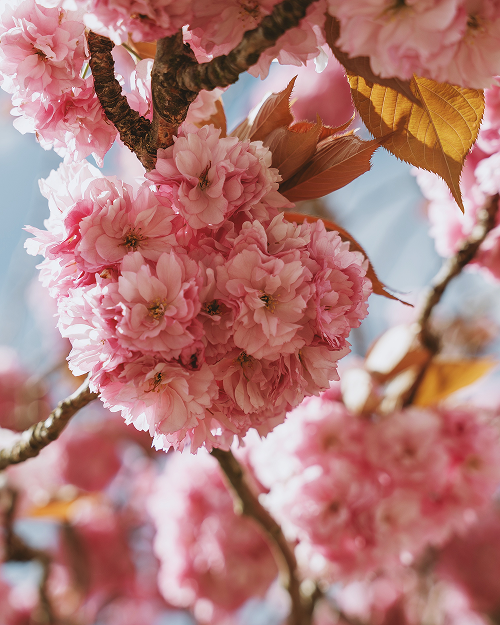
An image is an idea, not a story
Sølve Sundsbø and the Pirelli Calendar’s evolution, as seen by Tommaso Pincio
What do you think of this edition of the Pirelli Calendar?
It is very much in tune with the times — or, better said, this new Calendar captures (if you’ll forgive the pun) the moment we are living through, in two of its most urgent and distinctive traits: the need to reinvent the very notion of nature, and the necessity to rethink our relationship with the environment. The celebrated pairing of innovation and tradition is a fine and worthy thing, but we must beware of turning it into an empty slogan, resonant but hollow. We need to go to the heart of certain questions. For instance, to realise that nature itself and our idea of nature are not at all the same thing, and that neither is immutable. Even if we struggle to grasp it, the nature Lucretius had in mind was not the same as that imagined by Caravaggio, nor by the Impressionist painters, and it differs yet again from the idea we hold today.
We must understand that ideas are not abstractions — they are the motor of our actions. We make certain choices because we hold certain ideas.
"To realise that nature itself and our idea of nature are not at all the same thing, and that neither is immutable."
If those ideas are unclear, then so will be our actions, and therefore our relationship with the world around us — with all the consequences that may entail.

Sølve Sundsbø said that his ambition for this project was to create a visually unexpected world. Has he succeeded?
It is always risky to interpret another’s words, but I have the impression that when Sundsbø spoke of the unexpected, he did not mean simply the unusual, the odd, or the strange — even though surrealism is certainly part of his artistic vocabulary. Revelations surprise us not because they are bizarre, but for precisely the opposite reason: what seemed impossible only a moment before suddenly acquires its own, quiet normality.
What, in your opinion, is the thread that runs through the photographer’s work?
I would say symbiosis. In his work, bodies are always captured and portrayed in a moment of profound intimacy with their surroundings — as though there were no distinction between the two, as though they were parts of a single being.
Even in his fashion images, that same impression prevails: garments that are no longer mere fabric and inert material, but living organisms that share in the life of the body that wears them. I believe Sundsbø sees no fixed boundaries between things — between the living and the non-living, the organic and the inorganic, the solid and the gaseous, and so on. In his images, everything exists in a continuous state of mutual interaction, even on a technical level, where traditional photography often coexists with digital technology, blending analogue and digital with ease.
"Bodies are always captured and portrayed in a moment of profound intimacy with their surroundings — as though there were no distinction between the two, as though they were parts of a single being."

Can the intertwining of these two tools — technology and photography — be seen as a mirror of society in this very moment?
Undoubtedly. Symbiosis is the future — one might even say, a necessary path. Without adequate strategies for coexistence with the environment, a species is destined to perish, to vanish. Our technology increasingly tests nature’s ability to regenerate. Achieving harmony — and perhaps even fusion — between ourselves and the rest of the world is the most vital challenge of our time. Sundsbø’s women embody an evolutionary leap; they are beings who do not merely coexist with the elements themselves.
This is far less fanciful than it might seem. It is not merely a romantic vision of nature in the spirit of Caspar David Friedrich — it is science. Think of the recent book in which physicist Carlo Rovelli reflects on the equality of all things, showing us that “electrons and minds, stones and laws, judgements and galaxies are not essentially different in nature from one another”.
"Achieving harmony — and perhaps even fusion — between ourselves and the rest of the world is the most vital challenge of our time. Sundsbø’s women embody an evolutionary leap; they are beings who do not merely coexist with the elements, but long to live in symbiosis with them, to become elements themselves."
Is there an edition of the Pirelli Calendar from the past that particularly struck you?
I have a deep fondness for Peter Lindbergh — for his crystal-clear black and white — so I would be inclined to name one of his three calendars, perhaps the first, from 1996. But in the end, I would choose the very first of all, Robert Freeman’s calendar, the photographer of The Beatles and of Swinging London, with whom I instinctively associate the myth of the Pirelli Calendar itself. I would also single out one particular image from that edition: the one where half of the frame is filled by the blue expanse of the sea, and in the foreground a beach stretches out, marked by the long shadows of the late afternoon. A woman, in a perfectly ordinary two-piece swimsuit, stands at the centre of the image — small, almost distant. She seems more like a memory than a living, breathing person, as every photograph ultimately does, in its simple and piercing immediacy.
What does the Calendar represent in our time?
Its physicality. And I do not mean the physicality of the women it portrays, but that of the paper itself. When the Calendar was first created, the fact that it was a physical object was taken for granted, inescapable. Over time, that materiality has become a value in itself. We live in an era in which even art tends to dematerialise, to become virtual, impalpable, odourless, yet the Calendar has remained printed on paper, an object whose form and proportions have meaning. It is no coincidence that the photographers are not content simply to create images — they also take part in shaping the physical object, which changes every year. I believe its secret lies precisely in this tangible quality.
"The physical experience of an image is a fundamental part of a person’s spiritual formation. That images have become so immaterial is, I fear, not good for anyone. It carries deep risks: a growing difficulty in accepting one’s own body, or an underestimation of the consequences that a physical act can have — on others, or on ourselves."
In the past, it may have stemmed from the desire to craft a refined object that stood apart from the many calendars hanging on the soot-darkened walls of workshops. Today, it stands out because it continues to affirm that the tactile nature of an image must be preserved. It may sound trivial, yet it is a central issue that defines our age.
Think of how many people now store their personal photographs — the memories of their lives — in the digital memory of a phone, unlike in the past, when those same images were gathered in family albums, cherished and indispensable objects found in every home. Those albums were tended with respect and devotion — almost like ancestral altars in Japanese homes. The physical experience of an image is a fundamental part of a person’s spiritual formation. That images have become so immaterial is, I fear, not good for anyone. It carries deep risks: a growing difficulty in accepting one’s own body, or an underestimation of the consequences that a physical act can have — on others, or on ourselves.

How, in your view, has the perception of photography changed?
In a single word, photography has become Instagrammised. With that dreadful modern neologism ‘Instagrammable’, we have replaced what used to be called photogenic. It may seem a mere shift in scale, a banal evolution of media, but it is something far more radical — a true evolutionary leap, social, cultural, and even economic. Once upon a time, photography as a craft was the domain of a few — those who understood the secrets of the medium. Today, not only is the technique accessible to all, it is used by everyone, often for purposes far beyond the mere capture of an image. In the age of social media, photography has become the brick with which each of us constructs our identity. And since everyone wishes to portray themselves as a little better than they perceive themselves to be, it has also become a brick of artifice.
The world according to Instagram often has the fragility of a house of cards — at once fascinating and unsettling. And then there is artificial intelligence, which is transforming photography in every possible aspect. Whatever one’s judgement of these developments, one thing is certain: photography has become an arena where a person’s destiny is made and revealed. Asked about this, model and designer Alexa Chung once said: “I’m interested in photography — as is every human being.” I would go even further: no human being today can afford the luxury of ignoring photography.
"In the age of social media, photography has become the brick with which each of us constructs our identity. And since everyone wishes to portray themselves as a little better than they perceive themselves to be, it has also become a brick of artifice."
Has the image become a form of narrative, or has it always been one?
It is a complex question. In some measure, of course, it always has been. But in my view, the real core of the issue — and one of the most underestimated perils of our age — is just how much narrative now pervades everything, not only images. We have embraced the principle that everything must be told. But that is not so.
One can also explain, show, illustrate, or simply say. Instead, everyone tells stories — politicians, journalists, everyone. What is overlooked is that narrative, in this sense, becomes primarily a tool of persuasion. What we now call stories are, more often than not, propaganda. I am firmly convinced that we have come to give stories an excessive and misleading importance. It is not stories that change the world, but ideas.
At most, a story can help us understand an idea more deeply. My ideal images — and here I’ll allow myself another pun — are those that express an idea, not those that tell one.
"I am firmly convinced that we have come to give stories an excessive and misleading importance. It is not stories that change the world, but ideas."
More than sixty years have passed since the first Pirelli Calendar. How has it managed to survive in a world overflowing with images?
I would say precisely because it evokes an idea of the world — even before telling a story. The idea that a series of photographs might accompany the passing of time; the idea that, for each of the thirty or so days that make up a month, there should be a printed rectangle of paper hosting a single image, the Calendar endures because it believes that not all images are equal, that some are more deserving of persistence in our retinas.. Its fascination, at least for me, lies precisely in its faith in photography — in the search for that perfect shot which opens a fissure, a suspended instant of silence, within the deafening torrent of images that submerge us.
"The Calendar endures because it believes that not all images are equal, that some are more deserving of persistence in our retinas."

What role does the Calendar assign to women, the undisputed protagonists of its history?
Since its invention, photography has struggled to be recognised as an art. Even today, when we think of great photographers, we still tend to favour photojournalists, or those for whom the medium seems merely a tool — fashion photographers, for instance.
That photography is now accepted as a form of expression with an artistic dignity equal to painting or sculpture seems obvious, yet it was a conquest. In this, photography mirrors the battles women have fought for the same right — to be seen, to be acknowledged, to be taken seriously.
"What truly distinguishes the Calendar is the idea of inviting women to interpret a role — to imagine themselves upon a stage. These are not simple poses, but performances, acts of embodiment. Their relationship with the photographer resembles that of director and actress, rather than painter and model."
Curiously, the emancipation of women and the artistic emancipation of photography have advanced side by side — both beginning in the nineteenth century and both blossoming in the 1970s. And it must be remembered that women gave a decisive contribution to the transformation of photography into a noble art: think of Cindy Sherman, Francesca Woodman, Nan Goldin, and before them Tina Modotti and Diane Arbus.
In the Calendar, the woman may seem at first merely a model or a muse, yet what truly distinguishes the Calendar is the idea of inviting women to interpret a role — to imagine themselves upon a stage. These are not simple poses, but performances, acts of embodiment. Their relationship with the photographer resembles that of director and actress, rather than painter and model.
This year’s protagonists are eleven accomplished women — actresses, models, athletes. How does Sølve Sundsbø “portray” them?
More than portraying them, I believe he invited them to transform. Sundsbø chose women whose pasts already carried weight and meaning. Yet it was not so much their past that interested him, as their present — and perhaps their future. There is nothing merely illustrative or didactic in the way these women appear in the Calendar. Nothing that alludes to tennis in the case of Venus Williams, or to music in that of FKA twigs, for instance.
Their stories are not told, but revealed through personality, through essence. We see them transform, entering into dialogue with the elements and forces of nature. They are called to become water, fire, light, earth, plants. And this is not the familiar image of Woman as Mother Nature. In these photographs — and, indeed, on the set itself — these women were asked to confront an element, an environment, a world, and to find harmony within it. The result is a metamorphosis born of adaptation, of evolution — something that has been happening on this planet for millions of years, and perhaps beyond it.
"Their stories are not told, but revealed […] we see them transform, entering into dialogue with the elements and forces of nature. They are called to become water, fire, light, earth, plants."

In your opinion, who is the true protagonist of the Calendar — the woman, the photographer, or the images themselves?
A fine question — and the easy way out would be to say that there is no single protagonist, that no element prevails over the others. But that is not so — or rather, it will not be so if one or more of the Calendar’s images endure through time. Think of great art — of works that have entered myth. Of the work that most embodies that myth: Leonardo’s Gioconda. Who is its true protagonist? Mona Lisa, the artist, or the painting itself? Clearly, without Leonardo and his brush, she would not exist. Yet what everyone looks at is that woman’s face, her smile. Most people have only a vague notion of who Leonardo was, often imagining him more as a visionary scientist, as though painting were merely his pastime. Likewise, the visitors to the Louvre glance almost absent-mindedly at the countless other masterpieces the museum holds. Their eyes are drawn only to her — to the Mona Lisa — so much so that, for many, the Louvre is essentially her museum. When art achieves its purpose, both the artist and the work are absorbed by what remains — they become one with what the eye beholds. And so I hope, indeed I wish for the Calendar, that in time its true protagonist will prove to be the woman.
What is your own relationship with photography?
For me, photography is a machine of thought, a device of endless reflection, an inexhaustible source of insight. I am a terrible photographer, but a great photographic thinker.